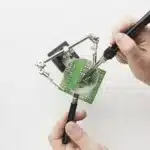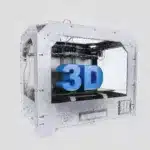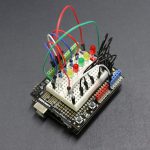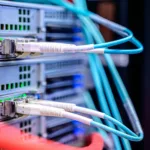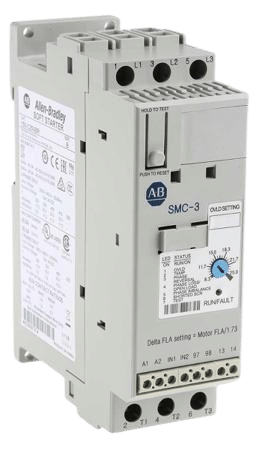
Introduction
In industrial automation, digitalisation, and motor management in particular, motor-driven systems are significant in various sectors, including manufacturing, HVAC, and water treatment. These systems demand efficient, reliable, and secure control mechanisms to optimise their operation and safeguard against cyber threats. Soft-starter units have emerged as a crucial technology in this context, offering both the finesse in motor control and a bulwark against the burgeoning menace of cyber security issues. Discover how soft starters optimise motor startups and contribute to mitigating cyber security vulnerabilities in our comprehensive article.
Understanding Soft-Starter Units: How They Work?
Soft-starter units are advanced electronic devices designed to facilitate the smooth start (acceleration) of electric motors by regulating the voltage supply during the startup phase. This process reduces the inrush current and the mechanical stress on the motor (especially AC motors) and the electrical network, thereby extending their lifespan and improving energy efficiency. The core function of a soft-starter is to manage the voltage applied to the motor. By gradually increasing the voltage, the unit allows the motor to accelerate at a controlled pace, increasing the speed of the shaft smoothly until it reaches its operating speed.
The Need for Soft-Starter Units for Enhanced Automation and Smart Technology
Soft starters are crucial for a myriad of reasons, fundamentally changing how motors interact with their power supply and the mechanical systems they drive. With industries’ rising dependence on automation and smart technologies, the role of soft starters extends beyond merely managing motor start-ups to encompass integral aspects of cybersecurity and operational efficiency. Additionally, soft starters incorporate advanced features to monitor and control motors, making them an integral component of modern industrial systems.
Potential Advantages and Key Features of Using Soft-Starter Units
Soft starters offer a range of advantages with remarkable features in various industrial and commercial applications. Some of the potential advantages and features of using soft starter units include:
- Voltage Control: Gradually increases the voltage to the motor, ensuring a smooth start.
- Current Limitation: Limits the peak current during startup, reducing the risk of electrical surges.
- Motor Protection: Shields the motor from overload conditions through integrated protection features.
- Enhanced Motor Longevity: Soft starters significantly extend the service life of motors by minimizing mechanical stress and electrical inrush currents during startup.
- Improved Energy Efficiency: Soft starters ensure that motors use only the necessary amount of power, contributing to overall energy savings.
- Operational Flexibility: These units allow for adjustable start and stop parameters, providing flexibility to meet various operational needs.
Comparing Soft-Starter Units with DOL Starters
Integrating soft-starter units in motor-driven systems has revolutionised the way motors are powered up. Traditional direct-on-line (DOL) starters, which apply full voltage directly to the motor terminals, often lead to abrupt starts, causing significant wear and tear. Soft starters, in contrast, ensure a controlled and efficient power-up sequence, leading to smoother operation and reduced maintenance costs.
Strategies for Efficient Motor Startup Include:
- Adjustable Voltage Ramp-Up: Customising the voltage ramp-up time to suit specific motor and load requirements ensures optimal performance.
- Initial Torque Settings: Setting the initial torque low can reduce the mechanical strain on the motor components and the load.
Tackling Cyber Security Challenges Using Soft-Starter Units
With industrial interconnectivity and the advent of the Industrial Internet of Things, cyber security is a paramount concern. Soft-starter units, integral components of industrial control systems, are not immune to these threats. However, manufacturers are increasingly incorporating advanced security features into these units to address potential vulnerabilities.
Cyber Security Measures Include:
- Encryption: Implementing robust encryption protocols for data transmission ensures that any information exchanged between the soft-starter and control systems is protected against unauthorised access.
- Authentication and Access Control: Robust authentication mechanisms prevent unauthorised access, ensuring authorised personnel can modify soft-starter settings.
- Regular Firmware Updates: Manufacturers provide firmware updates to address known vulnerabilities, enhancing the security posture of soft-starter units.
Best Practices for Implementing Soft-Starter Units
To maximise the benefits and ensure the security of soft-starter units, following best practices is crucial, including:
- Thorough Risk Assessment: Conducting an organised and comprehensive risk assessment to assess potential vulnerabilities in the system and implementing appropriate mitigation strategies.
- Regular Maintenance and Updates: Keeping the soft-starter firmware and software updated can protect against known vulnerabilities.
- Employee Training: Educating staff by providing adequate training about the significance of cyber security and safe operational practices to prevent inadvertent breaches.
Soft-Starter Units: Case Studies and Real-World Applications
Soft-starters are particularly useful in applications where the mechanical system cannot handle the sudden jolt of a direct start or where the high inrush current of a direct start would cause issues with the electrical supply system. From pumps, fans, conveyors, and compressors, the real-world applications include:
Industrial Manufacturing
In a manufacturing plant, the integration of soft-starter units with existing machinery led to a 30% reduction in energy consumption during motor start-up phases. Additionally, the enhanced control reduced mechanical wear, resulting in a 20% decrease in maintenance costs over a year.
HVAC Systems
Implementing soft starters for HVAC systems is significant for sensitive electronic equipment in the building. With soft starters, the HVAC systems experience less electrical and mechanical stress. Additionally, the reduced voltage drops help in maintaining the stability of the building’s electrical system.
Water Treatment Plants
Water treatment facilities often use large pumps that can significantly benefit from soft starters. By integrating soft starters, the pumps’ acceleration and deceleration can be effectively controlled.
Mining Industry
In the mining industry, heavy-duty machines like crushers and grinders are critical for operations. These machines require high starting torque but are sensitive to high inrush currents.
Renewable Energy Systems
In wind turbines, for instance, soft starters are used to control the electrical motors during start-up to ensure a smooth ramp-up to operational speed. This application not only protects the electrical components but also contributes to the stability of the power grid.
Final Thoughts
Soft-starter units represent a significant advancement in motor control technology, offering efficient power-up mechanisms and enhancing the operational lifespan of motor-driven systems. By incorporating advanced cyber security measures, these units are pivotal in safeguarding industrial control systems against cyber threats. A multitude of real-world applications clearly signify the significant contribution of soft starters in terms of cost savings and longevity and reliability of the equipment in modern electrical systems.








